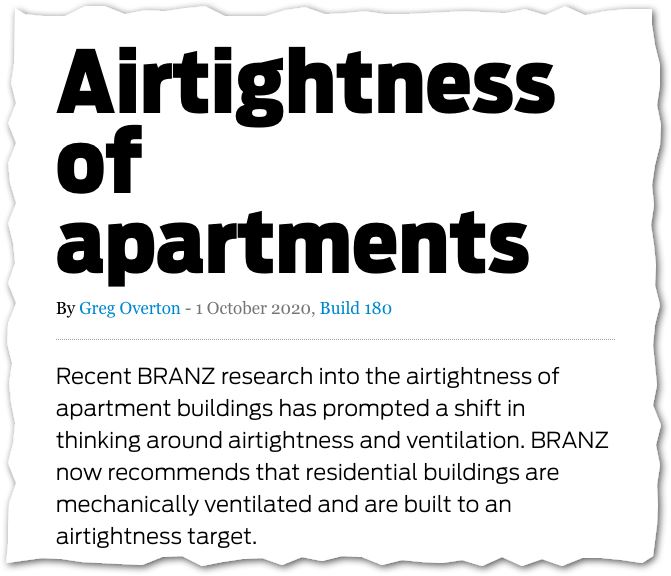I’ve heard (unofficial) news out of Wellington suggesting the new government is serious about a ‘wood first’ procurement policy for government buildings. Stand by for an official announcement. It can only help to have a Minister of Forestry who actually has forestry qualifications: the sort you get from the School of Forestry but also the ones learned (a long while …
Wellington worst place for damp, mouldy housing

If you missed this in-depth Stuff article, it’s worth reviewing: Infometrics senior economist Brad Olsen used the latest census data to find where in New Zealand, on average, has the most mouldy, damp houses with no heating. And the “winner” of this not-coveted title? Wellington. Mould impacts health and wellbeing. Myself, I know my asthma is definitely enhanced by it. …
Toward net-zero building: put this paper on your reading list

Advances Toward a Net-Zero Global Building Sector is a BIG tech paper, happily published with open access so people outside of academic institutions can actually read it. See below for the abstract and a link to the paper. New Zealand is well represented in the paper’s database due to our Passive House buildings. The following items are worth paying particular …
Small improvements are not enough

Rochelle Ade’s doctoral research findings have had quite a bit of media attention in recent weeks. Not surprising, given her claim that Homestar ratings aren’t delivering what they claim (and that the rating tool may be breaching the Fair Trading Act). Effectively, Ade measured the temperature and relative humidity of 30 homes in Auckland: those built according to the current …
Passivhaus In Australia book now available

If you haven’t yet downloaded and read the excellent book produced by APHA, Passivhaus in Australia, I highly recommend it. Although New Zealand had a head start over Australia on Passive House design and construction, the Aussies have now clearly surged to the lead with their large complex projects. School classrooms, student accommodation and a high-end apartment building have all …
Retrofit alert: know when fire-rated components are called for

Fire rating of the building/windows is not something we usually need to worry about in new, detached single-family homes, as the clearance to the property boundaries is sufficient. But during retrofits—especially ones that involve a change of use—fire regulations can have a big impact. It’s best to avoid the need for fire-rated windows as they are big money and poor …
Local MVHR only 40% efficient, says BRANZ test
We go to great lengths to maintain the certified level of MVHR efficiency in the high-performance building projects we consult on. We recommend or specify cross-counter flow heat exchangers with well insulated boxes, short exterior air ducts (also well insulated) and semi-rigid or rigid distribution ducting inside the thermal envelope; with all that, projects often achieve 80-90% overall efficiency (ie …
Interior condensation should be expelled from school
If Leaky Buildings 1.0 was about rain getting in where it shouldn’t, then Leaky Buildings 2.0 is all about the build-up of condensation, such that it feels like it’s raining inside. Building physics knows how to build schools that stay dry inside. But here we have another school with a roof that drips on the kids inside due to interior …
BRANZ sees the light on mechanical ventilation

Holy sh*t. Talk about a big shift in perspective. Let’s repeat that: “BRANZ now recommends that residential buildings are mechanically ventilated and are built to an airtightness target.” This comes from an article in the Oct 2020 edition of Build magazine, available online. In it, Senior Building Performance Engineer Greg Overton says “the measurements [from their latest research] sit alongside …